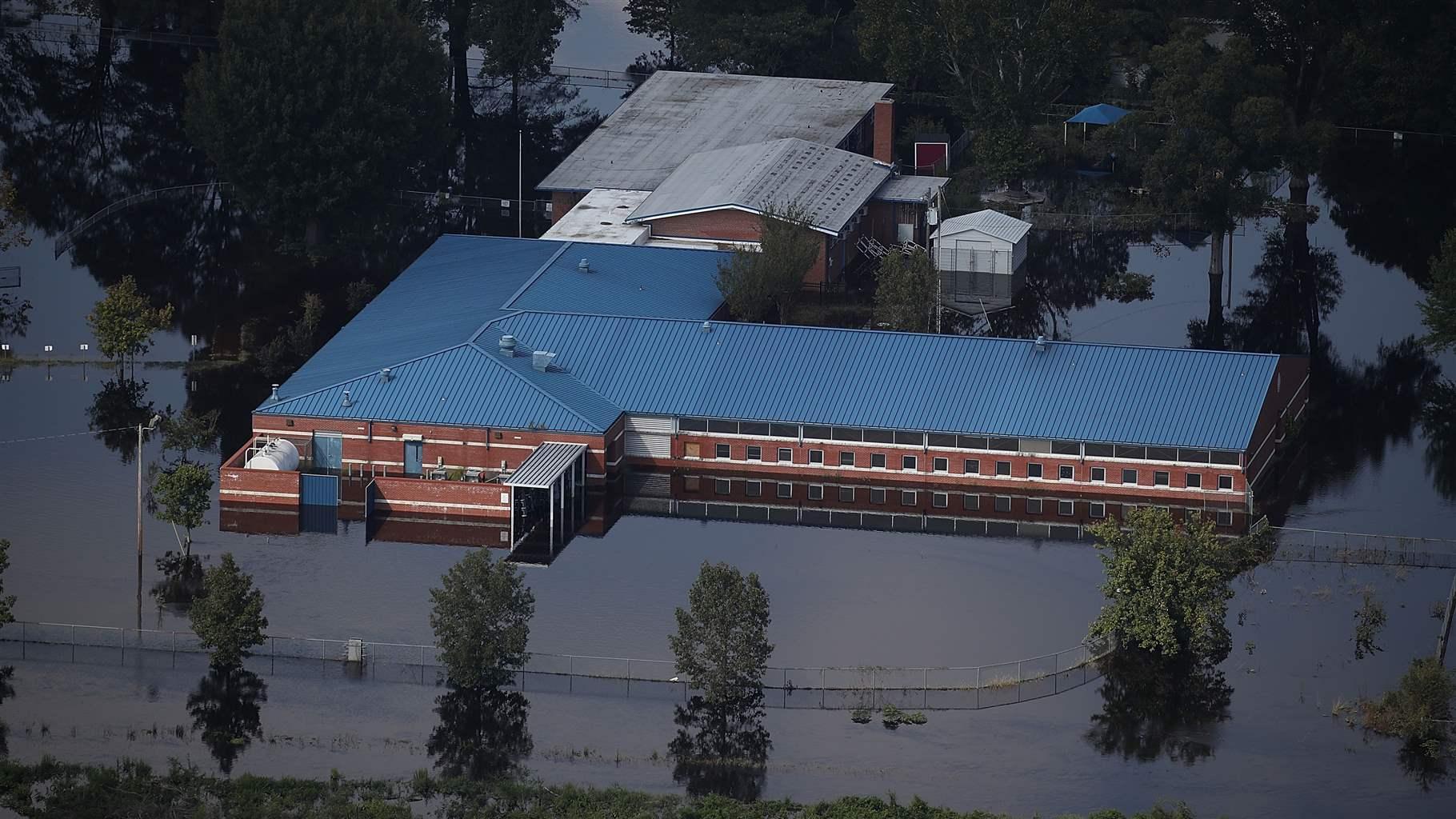House Joins Senate in Effort to Improve U.S. Flood Readiness
Revolving loan program would help reduce costs of natural disasters

As residents of Florida, the Carolinas, and much of the rest of the Southeast deal with the extended recovery and rebuilding from Hurricanes Michael and Florence—which caused dozens of deaths, and damage potentially exceeding $50 billion—they can gain some solace in knowing that the House of Representatives took a step this month toward minimizing the impacts of future floods on American communities.
H.R. 7037, introduced Oct. 5, would create a revolving loan fund program for states, to be run jointly by the Federal Emergency Management Administration (FEMA) and state governments. The program would provide the nation’s first sustainable source of money for flood mitigation projects. The House bill is similar to one introduced in the Senate in June 2017.
Mitigation is key to decreasing the costs of natural disasters such as Hurricanes Michael and Florence. A 2018 report by the National Institute of Building Sciences found that every dollar spent by the federal government on disaster mitigation saves $6 in future costs. Such savings are crucial: The U.S. has experienced more than $750 billion in flood-related damage since 2000.
The revolving loan fund program has broad support. It would provide low-interest loans to states, which in turn would encourage localities to implement flood mitigation projects proactively; facilitate state, federal, and local collaboration; and promote sound investments of taxpayer dollars.
Motivating communities to be proactive
By focusing on pre-disaster action, the program would support local efforts to reduce risk before flooding occurs, rather than waiting until the aftermath.
If properly implemented, it could reduce one of the most nettlesome costs of natural disasters: the repetitive repair and rebuilding of properties that flood frequently because they are in a flood zone, were built to substandard building codes, or both. Numerous properties in North Carolina and South Carolina were affected by Hurricane Florence and, just two years ago, Hurricane Matthew. To break this costly cycle, the loan program would fund buyouts of properties that flood repeatedly, elevation of businesses and homes above projected flood levels, ecological restorations that serve as storm buffers, and stormwater management projects that absorb rain and reduce runoff.
Taking a collaborative approach to mitigation
The program would share responsibility for mitigation by establishing a partnership among the different levels of government. Under the House and Senate bills, FEMA and the states would contribute money to set up the funds. Each state would then oversee and manage its individual fund, tailoring projects to local needs while following FEMA’s guidance on eligible activities.
Although some local efforts have already proved successful at financing preparedness projects, municipalities and counties often say they lack the resources to undertake mitigation on their own. As the steward of the U.S. budget, Congress should have a high interest in supporting mitigation, which would help reduce the federal government’s considerable costs after disasters. In the weeks since Hurricane Florence, the House has approved nearly $1.7 billion in emergency funding, with more assistance likely to come.
Using a proven model for government investment
Many states and municipalities have experience with revolving loan funds. Such funds have been used for affordable housing, renewable energy, clean water, energy efficiency, and other community interests. The Clean Water State Revolving Fund program, for example, finances improvements to wastewater infrastructure. From the program’s inception in 1987 through 2017, states and municipalities have leveraged $42 billion in federal monies to build $126 billion worth of clean-water infrastructure.
In supporting flood-prepared communities, the revolving loan program would not rely on disaster-specific legislation or other one-time opportunities for funding. Instead, the program would receive annual FEMA appropriations through the National Flood Insurance Program while also benefiting from self-replenishment. That is, loan repayments would replenish the state funds and become available for additional flood mitigation projects. States can also increase their funds by investing portions of them, providing a relatively predictable flow of money that could allow them to plan and complete strategic projects.
Hurricane Florence was the 12th 1,000-year rainfall event in the U.S. since the beginning of 2016 . With costly disasters on the rise, states, municipalities, and all Americans need to be prepared. Congress should pass state revolving loan fund legislation to enable communities to reduce the risk before the next storm hits.
Matt Fuchs is an officer with The Pew Charitable Trusts’ flood-prepared communities initiative.











